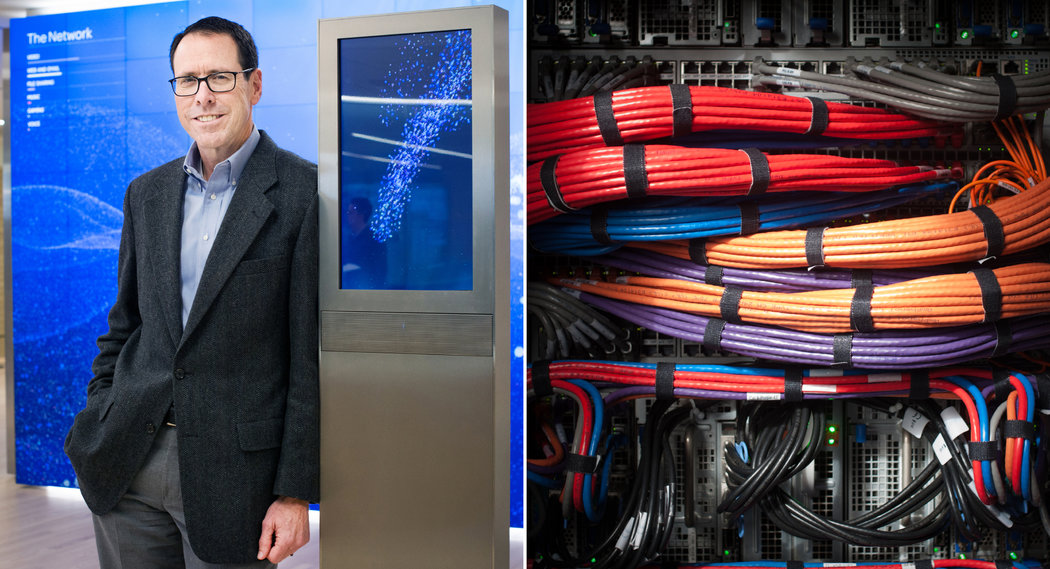By Anurag Agrawal
On 7th January, Harry Brelsford, Founder, SMBNation had a Q&A webinar with Techaisle on the challenges of SMB-focused MSPs and cloud channel partners. Given below are his questions and Techaisle’s responses.
Harry: Referring to this blog SMB IT Channel has reached an inflection point can you better define “inflection point?” does that mean a tipping point before collapse or a pivot?
Anurag: It is a pivot not a collapse – “one stop solution shop” is dying as each of cloud, mobility, managed services and CI/virtualization gets too complex for generalists to manage. The IT channel is changing, permanently and in ways that are entirely different from what we have seen in the past. In the same way that “cloud” refers to a very wide range of very different IT models and deployments, “the channel” is becoming a generic phrase that describes a set of business approaches that is increasingly specialized and fragmented. The areas that I just mentioned – cloud, mobility, managed services, virtualization - today, there is substantial overlap across these categories – but it is our belief that over time, success in any one of these areas will require discrete focus and investment, reducing opportunity for equal success in/focus on other competencies.
Harry: I like how you provide historical context – the comment you made regarding a market defined by the adoption of a particular type of technology (e.g. small Business Server (SBS)) is a point well taken by this crowd. But I’m not sure I’m seeing a cult-like community emerge around any particular cloud product (e.g. Office 365). Would you agree?
Anurag: Talking from a channel POV, agreed. If there is a cult growing, it is around Hybrid IT; possible that Cloud Broker business model will get to this level as well. SMB organizations will accept the notion that their focus on cloud needs to evolve into a focus on hybrid IT, as firms realize that their platforms and management scope must encompass on and off-premise systems. Truth of the matter is that Office365 also disintermediates the channel. There is no stopping an organization from going directly to Microsoft and purchasing and installing Office 365 as opposed to using SBS from a channel partner in the past. It is a classic cloud vs. on-premise conundrum. The ecosystem should evolve but it will evolve around integration of data and applications.
Harry: Along those lines, I just had a conversation that I’m not seeing the same ecosystem building up around a cloud product or service. For example, we’d like to take credit that SBS really helped build Trend Micro and today it’s a $1b company. But I’m not seeing these add-ons in the same way with Office 365. The only thing I can point to are a few SharePoint snap-ins and a few tools (migrations, etc.). Do you agree or disagree?
Anurag: Mostly agree. There is a lot of potential around Salesforce, but a lot of cloud software suppliers sell direct, using online trials rather than channel members to educate customers about offerings. This does not mean that there will be no aggregation opportunity in the future, but the cloud broker model is still pretty immature, and the traditional channel has several barriers to surmount before they can adopt this kind of role with respect to cloud.
Harry: You put a lot of emphasis on mobility. While I think mobility is a game changer and you have kids walking around with cranked over necks on city streets, I guess I’ surprised. Please defend your lead-off statement about mobility, sir!
Anurag: Seen on the web recently – “Software is eating the world, and mobility is eating software; therefore, mobility is eating the world.” Everywhere, and especially outside the US, the mobile device is the key to information access and use. Today, the workspace is not defined by windows and walls and common area couches. For millions of SMB employees, the “workspace” is not a physical location – it is a virtual space defined by access from multiple screens which are used from multiple locations. Techaisle data shows that more than one-third of SMB employees today spend at least 20% of their work time away from a central office, and that 80% use mobile devices to access corporate information. If the “office” is defined by devices, so too is “workplace” defined by the ability to work from wherever those devices (and their users) are located. SMBs are investing in mobility because it contributes to both cost savings and increased market reach, with “improved productivity” and related answers connected to establishing “better ways of working” viewed as the greatest benefit of mobility within SMBs. Techaisle’s data shows that small and midsized businesses have different challenges in supporting the mobile workforce: while both cite TCO as their most significant challenge, small businesses struggle with the “on ramps” to mobility (such as finding appropriate suppliers and solutions), while midmarket firms report that they are more concerned with security/data protection and mobile management. Empowering the SMB mobile workforce becomes a huge opportunity for MSPs.
Harry: Let’s go throw the four points of overlap in your first blog installment. For the benefit of the listeners, could you expand on your four bullet points?
Anurag: In our research, Techaisle has divided the SMB channel into four technology-focused groups:
•Mobility, which includes the channel members who are looking to regain relevance in the client market by providing management solutions that address the sprawl of applications (and as a result, complexity and GRC exposure).
•Managed services, which hones in on firms that are successfully pursuing a services-led, recurring revenue-based business model.
Cloud, which represents – at least in our view – the mainstream opportunity of the future, and which will ultimately divide further into segments clustered around delivery models, customer sets and/or technology specialties.
•Virtualization and converged infrastructure, which represents the evolution of the traditional channel focused on sales of back-office technology.
Today, there is a great deal of overlap between the four groups, but we have hit an inflection point, and the (more or less) common starting point is launching multiple distinct paths. At present, though, this diffusion of channel interests and capabilities is the source of a great deal of complexity within the channel, and as a result, within the vendor and buyer ranks as well. All three of the core supply chain communities – buyers, vendors and the channel – need to understand what is required for success so that the channel can make the investments needed to support emerging requirements, vendors can commit to the investments and partners needed to drive success, and buyers can identify the suppliers able to deliver business benefit from advanced technology acquisition
Harry: Is managed services still a valid business model in a cloud service world?
Anurag: Good question! Yes. Think about “cloud service” as “hybrid IT that requires integration between on-prem and cloud-based resources,” and the opportunity for third party management is clear. Also, while developers love the AWS credit-card-and-go approach, business users – and SMBs especially – need more support. MSPs are hardly the only source of managed services: more than 60% of VARs, SPs and SIs sell managed services today, and there has been an increase in managed services activity in all of these channels and Channels generally are gaining comfort with managed services delivery. Same time, the variety and depth of managed services will make it difficult for non-specialists to keep pace with MSP specialists. And SMB Buyer preference for a single source of managed services will have an impact on managed services market and channel development. To put it in context, SMBs are more dependent on technology than ever before. Since 2010, IT staffing has dropped in microbusinesses, and increased in small and midmarket firms. Accordingly, managed services acts as a substitute for IT staff in firms with 1-19 employees, and as a means of augmenting IT management in larger SMBs. SMBs are struggling with IT complexity, and turning to managed services providers for support.
Harry: I want to drill down a layer on the end of your first blog’s conclusion: “Many vendors will struggle with simply understanding this fundamental change in the market, and more will fail to understand the focus and investment required to grow with partners through this transitional period.” I’ve seen three RMM companies reorganize in the past few months. The old GFI marketing team in the UK was let go. AVG had a significant layoff of the old LevelPlatform group and Kaseya just had a shake up letting developers go but hiring a lot of account reps. That’s my evidence. What is your viewpoint?
Anurag: This is not just an RMM problem, it is a channel enablement problem. In the cloud era, established partners need to change: management approach, management metrics, marketing approach, technical service skills, sales approach, and sales comp models. Or they can get displaced…Only yesterday I read somewhere that the HP Inc. channel chief Thomas Jensen had said that Channel partners must grow their business to be more solution-oriented, as a transactional based business may not be enough in five years' time. But at least in the article there was no mention of how this magical transition was going to happen and what is HP Inc. doing to make it happen.
Migration to advanced technologies such as cloud and analytics, which require sophisticated deployment capabilities and often new recurring-revenue-based sales models, has left the traditional channel behind. Vendors are “helping” partners to build the capabilities needed to participate in the growth segments of the IT industry, but their methods are unsurprisingly designed to align the channel with a particular product set. This has the net effect of converting resellers/integrators/consultants into sales agents – which erodes the channel’s basic position as a trusted advisor. There is not a lot of current appetite for vendor-neutral enablement, but there is a great deal of need for it.
Harry: This blog New Wave of SMB Channel conflict in building a cloud practice, I thought the whole idea with cloud was to be more agile. But you make a super tanker reference but call it an inapt comparison. Can you expand in our thinking?
Anurag: Yes, cloud provides agility for the end-customer but for channels it is like turning a super tanker. Building an effective cloud practice within a channel business is a complex undertaking. Using an old metaphor, it has been compared to “turning a supertanker.” This is an inapt comparison, and not just because the vast majority of channel businesses are far smaller than a large ocean vessel. The real problem with the comparison is that turning a supertanker refers to an exercise whose success rests on an anticipation of future change. Certainly, this is part of the problem for the channel – what is the best time to invest in ramping up cloud practice resources? – but the issue has a much greater scope. A successful cloud business practice requires new management metrics, new financial models, new sales processes (and generally, compensation models), new vendor relationships, new marketing activities, new consulting capabilities and new technical support capabilities. To use a nautical analogy, creating a cloud practice within an existing channel business is like building a second boat within your ship, sailing it off in a different direction, and maintaining alignment between the two courses in order to maximize synergies and benefits and reduce expensive discontinuities
Harry: You go on to allude that a cloud practice has to have a new approach and I agree. In my SMB Nation Fall 2015 keynote, I had a slide about firing your staff at your MSP practice. Basically I was saying $100K MCSE on the server-side are irrelevant and expensive on the cloud side. Let’s talk about that. Do we need to fire everyone and use virtual monkeys to do the work?
Read More










 more – for HPE Partners who use Engage and Grow www.hpeengageandgrow.com ; you’ll find award points available that you can’t ignore.
more – for HPE Partners who use Engage and Grow www.hpeengageandgrow.com ; you’ll find award points available that you can’t ignore.














 security topics (listed below) that you might not have considered. In fact, I’ll go so far as to assert we are offering content that includes something for everyone and more importantly, something YOU DO NOT KNOW! In fact, if you honestly knew everything in this lecture, we’ll refund your workshop fee. That would be very easy as the workshop is complimentary LOL!
security topics (listed below) that you might not have considered. In fact, I’ll go so far as to assert we are offering content that includes something for everyone and more importantly, something YOU DO NOT KNOW! In fact, if you honestly knew everything in this lecture, we’ll refund your workshop fee. That would be very easy as the workshop is complimentary LOL!









